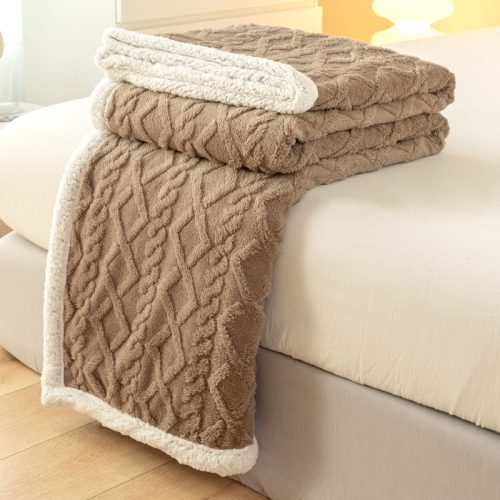The choice between wool blankets and synthetic blankets depends on your specific needs, preferences, and circumstances. Both types of blankets have their own set of advantages and disadvantages. Let’s compare them to help you decide which might be better for your situation:
Wool Blankets:
- Natural Insulation: Wool is an excellent natural insulator that can keep you warm in cold weather. It traps heat effectively and provides cozy warmth.
- Temperature Regulation: Wool can also regulate body temperature, making it suitable for a wide range of temperatures. It keeps you warm when it’s cold and allows breathability when it’s warm.
- Moisture Management: Wool wicks moisture away from your body, keeping you dry and comfortable. It can absorb moisture without feeling damp.
- Durability: Wool blankets are durable and can last for many years with proper care. They maintain their insulating properties and comfort over time.
- Fire Resistance: Wool is naturally fire-resistant, providing an extra layer of safety.
- Comfort: Wool blankets are soft and have a luxurious texture that many people find comfortable and inviting.
- Hypoallergenic: Wool is often hypoallergenic because it doesn’t harbor dust mites and allergens to the same extent as some synthetic materials.
- Sustainability: Wool is a renewable and biodegradable resource, making it an eco-friendly choice.
Synthetic Blankets (e.g., Polyester, Fleece):
- Affordability: Synthetic blankets are often more affordable than wool blankets, making them accessible to a wide range of budgets.
- Hypoallergenic Options: Some synthetic materials are inherently hypoallergenic, making them suitable for those with allergies.
- Lightweight: Synthetic blankets are usually lighter than wool blankets, making them easier to carry and suitable for travel.
- Quick Drying: Synthetic materials dry quickly, which can be advantageous if your blanket gets wet.
- Low Maintenance: Synthetic blankets are often easier to clean and may not require special care like wool.
- Variety of Styles: Synthetic blankets come in a wide range of colors, patterns, and designs, providing more options for personal style.
So, which is better?
It depends on your priorities:
- If you prioritize natural insulation, temperature regulation, and moisture-wicking properties, and you don’t mind investing in a durable and sustainable option, wool blankets are an excellent choice, especially for cold climates.
- If affordability, lightweight design, quick drying, and low maintenance are more important to you, synthetic blankets may be the better option.
Ultimately, the “better” choice depends on your individual needs, budget, and personal preferences. Many people find it beneficial to have a mix of both wool and synthetic blankets to use in different situations and seasons.


